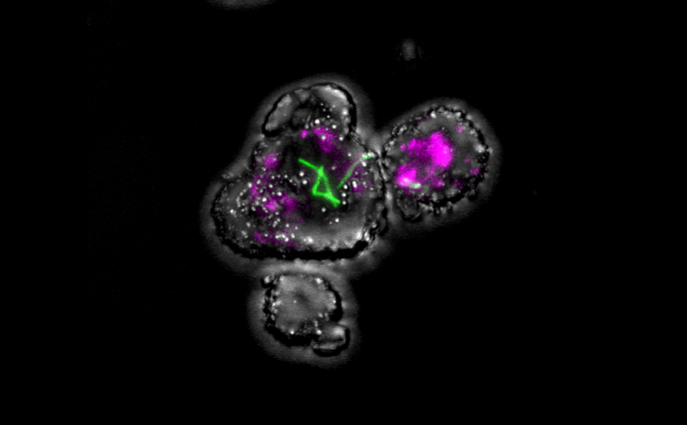
Chemistry is Central to Everything
The Buonomo Lab engages in research at the interface of chemistry, biology, and engineering. We deploy aspects of these disciplines to create technologies that enable the discovery of novel therapeutics, diagnostic platforms, and to facilitate basic scientific inquiry.
One-Plasmid-One-Compound (OPOC)
From the discovery of novel site-specific genetically-encodable bioconjugation tags, to the discovery of specific protease inhibitors, we’re looking to transform the pipeline for the discovery of peptide-based materials with massive libraries that renew themselves. We use easily expandable DNA-encoded libraries inserted as a module into plasmids to rapidly produce millions of compounds that can be applied to:
Identify genetically-encodable peptides that react specifically with small chemical moieties that are easily added to medicinally-important molecules to facilitate targeted delivery of key therapeutics.
Facilitate the characterization of protease substrate specificities and create activity-based probes with limited off-target effects.
Create peptide libraries that enable discovery of G Protein-Coupled Receptor (GPCR) ligands.
Screen peptide libraries to identify substrates of glycosyl transferases that append these key post-translational modifications (PTMs) to proteins.
New Protein Sequencing Platforms
We are repurposing Edman degradations to create a new platform for protein/proteoform identification and to expand this technology towards an efficient and scalable single-cell proteomics platform. We combine new and old bioorthogonal chemistries to ubiquitously to label the majority of naturally-occurring amino acids with or without post-translational modifications. These chemistries enable the addition of moieties with amplifiable coded signals to circumvent the need for high-end specialized mass spectrometry equipment, enabling the identification of billions of amino acids and rebuild peptide sequences to characterize proteoform differences between healthy and diseased tissues.
Chemical Bacteriology
We use bioorthogonal chemistry to enable the characterization of host-pathogen interactions of intracellular bacteria. Our approaches include metabolic engineering and extraction/reconstitution to introduce chemoselective reaction handles to enable the study of highly heterogenous lipids that influence the host response to pathogen invasion. We hope to utilize our approaches to:
Identify unknown receptor-ligand interactions during the early phases of pathogenesis.
Create chemoproteomics tools to enable reliable identification and quantification of proteome differences between healthy and infected cells.
Facilitate the characterization of bacterial membrane reorganization and lipid mobility.
Incorporate chemical moieties that enable detection and rapid susceptibility screening of pathogenic bacteria, especially towards point-of-care diagnostics.
Host-Activated Prodrug Moieties for Carboxyl-Containing Entites
Our knowledge of protecting groups utilized in complex synthetic schemes has enabled our design of new cleavable moieties that move beyond the ester. These functional groups mask carboxylates in a manner that enables these moieties to remain uncharged until they are at the specific site where they are needed to act as therapeutics. This enables facile membrane permeability, prevents metabolism and excretion that ablates therapeutic activity, and limits the exposure of potentially toxic entities to only the sites of pathologies such as infection, auto-immune disorders, and cancer.



